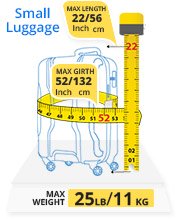
Accurate Pricing
Properly determining the weight and size of your package ensures that you are charged the correct shipping fees.

Every carrier has specific restrictions on weight and dimensions. Here's a quick overview:

Different carriers have different rules for package sizes. These typically include:


Use appropriately sized boxes and lightweight filler materials to avoid extra dimensional weight charges.

Always weigh your package after sealing to include the weight of packing materials in your calculations.

Opt for lightweight but sturdy packaging materials to keep your items safe without adding unnecessary weight.

Research and compare carriers to find the most cost-effective option for your shipment size and weight.

Always measure your package from its widest points to ensure accurate size calculations and avoid unexpected surcharges.

Large but lightweight items may be charged based on their size instead of weight, leading to higher shipping costs if overlooked.

Using boxes that are too large for your items increases both dimensional weight and shipping costs unnecessarily.

Heavy or bulky packing materials can add unnecessary weight and increase your shipping expenses.

Incorrectly placing the shipping label can cause scanning issues, leading to delays or lost packages.

Failing to weigh and measure the package after sealing may result in errors that increase costs or create shipment delays.
Dimensional weight calculates shipping fees based on the package size rather than its actual weight. It ensures carriers optimize their space usage.
It’s always better to measure and weigh accurately to avoid discrepancies with the carrier.
Consolidating items into one package and selecting cost-effective carriers are good strategies.
You may need to use a freight service or face additional charges for oversized items.